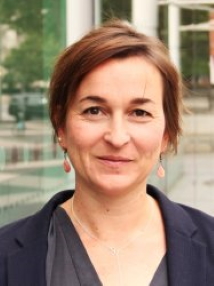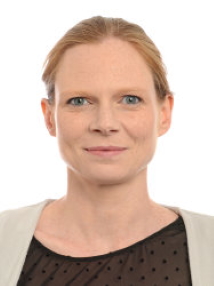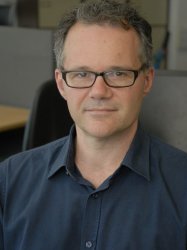
Overview
The aim of the Healthy Cities, Healthy People programme is to advance our knowledge of the impacts of multi-sectoral social, economic, behavioural and technological processes on environmental conditions, exposures and health, with a focus on cities where more than one half of the world’s population now resides.
This research will support the promotion of healthy urban environments both in high-income and low- and middle-income countries (LMICs), advancing sustainable development that supports healthier lives for all through tackling health inequalities.
Theme Lead
Prof. Majid Ezzati

Professor of Global Environmental Health
Programme Lead: Healthy Cities, Healthy People
Dept. of Epidemiology and Biostatistics, School of Public Health
View papers for Professor Majid Ezzati
Category:
Principal Team
Prof. Frank Kelly FIEnvSc FRCP (Hons)

Humphrey Battcock Chair in Community Health and Policy
Deputy Director of MRC Centre & Programme Lead: Environmental Exposures
Environmental Research Group, School of Public Health
View papers for Professor Frank Kelly
MRC Centre Themes:
Environmental Exposures – Programme Lead
Healthy Cities, Healthy People
Research areas:
Prof. Edward W Gregg

Chair in Diabetes and Cardiovascular Disease Epidemiology
Dept. of Epidemiology and Biostatistics, School of Public Health
View papers for Professor Edward W Gregg
Category:
Dr Audrey de Nazelle

Senior Lecturer and Co-Deputy Director of the Centre of Environmental Policy
Faculty of Natural Sciences, Centre for Environmental Policy
View papers for Dr Audrey de Nazelle
Category:
Dr Daniela Fecht

Lecturer in Geospatial Health
Dept. of Epidemiology and Biostatistics, School of Public Health
View papers for Dr Daniela Fecht
MRC Centre Themes:
Healthy Cities, Healthy People
Biostatistics and Data Science
Research areas:
Associated Team
Dr Benjamin Barratt

Reader in Environmental Exposures & Public Health
Environmental Research Group, School of Public Health
View papers for Dr Benjamin Barratt
MRC Centre Themes:
Environmental Exposures
Healthy Cities, Healthy People
Research areas:
Dr Sean Beevers

Reader in Atmospheric Modelling
Environmental Research Group, School of Public Health
View papers for Dr Sean Beevers
MRC Centre Themes:
Environmental Exposures
Healthy Cities, Healthy People
Research areas:
Prof. Mireille Toledano

Mohn Chair in Population Child Health & Director of the Mohn Centre
Dept. of Epidemiology and Biostatistics, School of Public Health
View papers for Professor Mireille Toledano
MRC Centre Themes:
Cohorts and Data Resources
Molecular Signatures and Disease Pathways
Healthy Cities, Healthy People
Research areas:
Dr Bethan Davies

Clinical Senior Lecturer in Epidemiology and Deputy Director of the Small Area Health Statistics Unit; Honorary Consultant in Public Health Medicine at Imperial College Healthcare NHS Trust
Dept. of Epidemiology and Biostatistics, School of Public Health
View papers for Dr Bethan Davies
Dr Gary Fuller

Senior Lecturer in Air Quality Measurement
Environmental Research Group, School of Public Health
View papers for Dr Gary Fuller
MRC Centre Themes:
Environmental Exposures
Healthy Cities, Healthy People
Research areas:
Dr David Green

Senior Research Fellow
Environmental Research Group, School of Public Health
View papers for Dr David Green
MRC Centre Themes:
Environmental Exposures
Healthy Cities, Healthy People
Research areas:
Dr Heather Walton

Senior Lecturer in Environmental Health
Environmental Research Group, School of Public Health
View papers for Dr Heather Walton
Key Projects and Papers
• Our new research programme on health in cities Pathways to Equitable Healthy Cities’ funded through the Wellcome Trust will use a combination of traditional and emerging data sources (e.g. high-resolution satellite imagery, street imagery and social media) to improve measurements and estimates of multiple health and urban environment variables (e.g. housing characteristics, air pollution, green space, walkability) and assess the impact of policies on mortality and hospitalisation. The programme will develop a shared analytical framework, comparing results across two large cities in high-income countries (London, Vancouver) and four in LMICs (Accra, Beijing, Dhaka, Tamale).
• We will use the implementation of the London ultra-Low Emission Zone (uLEZ) in April 2019, to evaluate the expected impact of lower levels of air pollution on: lung function and lung growth in primary school children, two risk markers for chronic respiratory illness in later life (CHILL study); cognitive progression in early secondary school years (SCAMP study); and on cardio-respiratory diseases in adults, both at city-wide and at small-area scale, using the Small Area Health Statistics Unit (SAHSU) database.
•We will assess the health impact of a road charging scheme. The Western Extension Zone to the London Congestion Charge zone was in operation for 4 years before being discontinued in 2010, a rare opportunity to conduct a natural experiment. We will provide information on the impact on hospitalisation of such schemes using the Small Area Health Statistics Unit (SAHSU) database.
• A new Health Foundation-funded project will explore how the health of children aged 11 to 19 is influenced by the characteristics of the places they spend their time. The influence of both physical and virtual (online) places will be considered in relation to children’s development of knowledge and skills and their impact on economic productivity and social development.
• Co-designed with the local community in White City, West London, the WellHome study focuses on the air quality inside and outside of over 100 homes of children with asthma. The aim of the study is to identify dominant air pollution exposures across the indoor: outdoor air pollution continuum within vulnerable and diverse urban communities, and to identify behavioural changes that can reduce this exposure and improve health outcomes.
• We will use the implementation of the London ultra-Low Emission Zone (uLEZ) in April 2019, to evaluate the expected impact of lower levels of air pollution on: lung function and lung growth in primary school children, two risk markers for chronic respiratory illness in later life (CHILL study); cognitive progression in early secondary school years (SCAMP study); and on cardio-respiratory diseases in adults, both at city-wide and at small-area scale, using the Small Area Health Statistics Unit (SAHSU) database.
•We will assess the health impact of a road charging scheme. The Western Extension Zone to the London Congestion Charge zone was in operation for 4 years before being discontinued in 2010, a rare opportunity to conduct a natural experiment. We will provide information on the impact on hospitalisation of such schemes using the Small Area Health Statistics Unit (SAHSU) database.
• A new Health Foundation-funded project will explore how the health of children aged 11 to 19 is influenced by the characteristics of the places they spend their time. The influence of both physical and virtual (online) places will be considered in relation to children’s development of knowledge and skills and their impact on economic productivity and social development.
• Co-designed with the local community in White City, West London, the WellHome study focuses on the air quality inside and outside of over 100 homes of children with asthma. The aim of the study is to identify dominant air pollution exposures across the indoor: outdoor air pollution continuum within vulnerable and diverse urban communities, and to identify behavioural changes that can reduce this exposure and improve health outcomes.
•NCD Risk Factor Collaboration (NCD-RisC). Diminishing benefits of urban living for children and adolescents’ growth and development. Nature 615, 874–883 (2023). DOI: 10.1038/s41586-023-05772-8.
•Metzler AB, Nathvani R, Sharmanska V, Bai W, Muller E, Moulds S, Agyei-Asabere C, Adjei-Boadi D, Kyere-Gyeabour E, Tetteh JD, Owuwu G, Agyei-Mensah S, Baumgartner J, Robinson BE, Arku RE, Ezzati M. Phenotyping urban built and natural environments with high-resolution satellite images and unsupervised deep learning. Science of The Total Environment 2023: 893(164794). DOI: 10.1016/j.scitotenv.2023.164794
•Aarthi GR, Mehreen Begum TS, Moosawi SA, et al. Associations of the built environment with type 2 diabetes in Asia: a systematic review. BMJ Open 2023;13:e065431. DOI: 10.1136/bmjopen-2022-065431
•Chamberlain RD, Fecht D, Davies B, Laverty AA. Effects of low emission zones and congestion charging zones on physical health outcomes: a systematic review. The Lancet 2022:400(1) DOI: 10.1016/S0140-6736(22)02240-1
•Roca-Barceló, A., Fecht, D., Pirani, M. et al. Trends in Temperature-associated Mortality in São Paulo (Brazil) between 2000 and 2018: an Example of Disparities in Adaptation to Cold and Heat. J Urban Health 99, 1012–1026 (2022). DOI: 10.1007/s11524-022-00695-7
•Differential impact of government lockdown policies on reducing air pollution levels and related mortality in Europe. Schneider R, Masselot P, Vicedo-Cabrera AM, Sera F, Blangiardo M, Forlani C, Douros J, Jorba OJ, Adani M, Kouznetsov R, Couvidat F, Arteta J, Raux B, Guevara M, Colette A, Barré J, Peuch VH, Gasparrini A. Sci Rep 2022;12(1).
•Association of tropical cyclones with county-level mortality in the US. Parks RM, Benavides J, Anderson GB, Nethery RC, Navas-Acien A, Dominici F, Ezzati M, Kioumourtzoglou MA. JAMA 2022;327(10):946-56.
•Characterisation of urban environment and activity across space and time using street images and deep learning in Accra. Nathvani R, Clark SN, Muller E, Alli AS, Bennett JE, Nimo J, Bedford Moses J, Baah S, Metzler AB, Brauer M, Suel E, Hughes AF, Rashid T, Gemmell E, Moulds S, Baumgartner J, Toledano M, Agyemang E, Owusu G, Agyei-Mensah S, Arku RE, Ezzati M. Sci Rep 2022;12(1).
•Health and development from preconception to 20 years of age and human capital. Black RE, Liu L, Hartwig FP, Villavicencio F, Rodriguez-Martinez A, Vidaletti LP, Perin J, Black MM, Blencowe H, You D, Hug L, Masquelier B, Cousens S, Gove A, Vaivada T, Yeung D, Behrman J, Martorell R, Osmond C, Stein AD, Adair LS, Fall CHD, Horta B, Menezes AMB, Ramirez-Zea M, Richter LM, Patton GC, Bendavid E, Ezzati M, Bhutta ZA, Lawn JE, Victora CG. Lancet 2022;399(10336):1730-40.
•Geographical Inequalities and Social and Environmental Risk Factors for Under-Five Mortality in Ghana in 2000 and 2010: Bayesian Spatial Analysis of Census Data. Arku RE, Bennett JE, Castro MC, Agyeman-Duah K, Mintah SE, Ware JH, Nyarko P, Spengler JD, Agyei-Mensah S, Ezzati M. PLoS Med. 2016 Jun 21;13(6):e1002038.
•Anomalously warm temperatures are associated with increased injury deaths. Nature Medicine 2020; 26(1):65-70. Parks RM, Bennett JE, Tamura-Wicks H, Kontis V, Toumi R, Danaei G, Ezzati M.
•Contributions of diseases and injuries to widening life expectancy inequalities in England from 2001 to 2016: a population-based analysis of vital registration data. Bennett JE, Pearson-Stuttard J, Kontis V, Capewell S, Wolfe I, Ezzati M. Lancet Public Health. 2018 Dec;3(12):e586-e597.
•Measuring social, environmental and health inequalities using deep learning and street imagery. Suel E, Polak JW, Bennett JE, Ezzati M. Sci Rep. 2019 Apr 18;9(1):6229.
•Rising rural body-mass index is the main driver of the global obesity epidemic in adults. NCD Risk Factor Collaboration (NCD-RisC). Nature. 2019 May;569(7755):260-264.
•Inequalities in exposure to nitrogen dioxide in parks and playgrounds in Greater London. Sheridan CE, Roscoe CJ, Gulliver J, de Preux L, Fecht D. IJERPH 2019, 16:3194
